常相聚食府(桥东街店)
5.0/5
4 Reviews
No. 2 of Local Restaurants in Jinzhong
Highlights: A restaurant beloved by locals, specializing in home-style dishes.

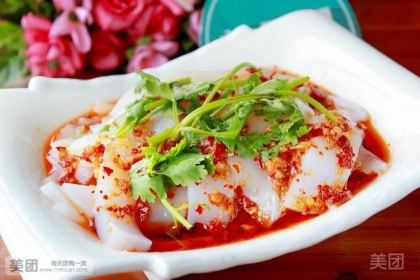
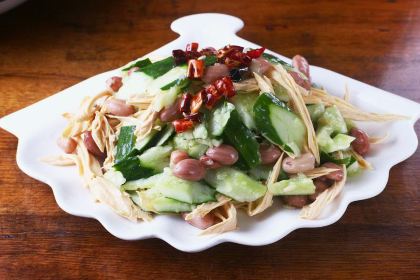
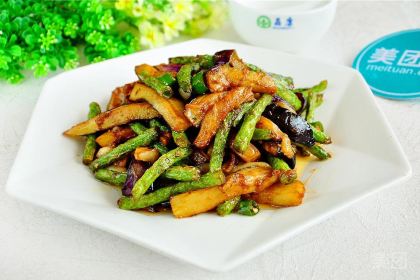
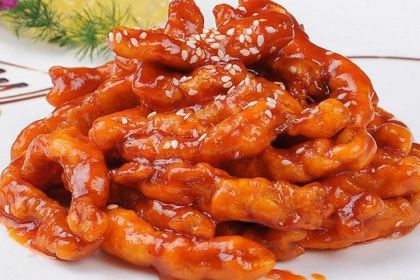
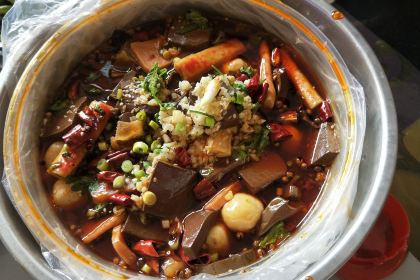
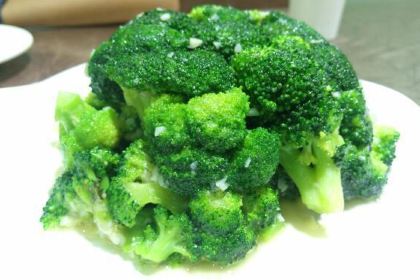
More
Open Now|17:00-22:00Show more
+8618735440596
1 Qiaodong Street
 M35***13My treasure restaurant, the dishes are delicious, the jelly is super delicious
M35***13My treasure restaurant, the dishes are delicious, the jelly is super deliciousReviews of 常相聚食府(桥东街店)
Some reviews may have been translated by Google Translate
5/5Outstanding
All (4)
Latest
Photo reviews (2)
Positive reviews (1)
My treasure restaurant, the dishes are delicious, the jelly is super delicious
Who could possibly understand? After braving the crowds three times in Pingyao, I finally discovered the truest expression of Shanxi merchant culture in the ancient city of Taigu. There's no overly commercialized hustle and bustle, no crowded tour groups, only the bustling life beneath the blue bricks and gray tiles, and the legends of Shanxi merchants hidden in time. This thousand-year-old city, known as the "Wall Street of China," is a destination for all those who appreciate off-the-beaten-path travel. 🌟 Why do I love Taigu so much? Keep this selfish whim to yourself. As a late Qing Dynasty financial center, on par with Pingyao, Taigu hides a more nuanced historical fabric. Hometown of the Republic of China tycoon Kong Xiangxi, it boasts a neatly organized layout of "four streets, eight wells, and seventy-two alleys," yet even the ancient city doesn't charge admission. While Pingyao offers a large-scale display of historical sites, Taigu offers visitors the chance to spot elderly people basking in the sun on doorsteps and vendors preparing freshly prepared food at alley entrances. The ancient city isn't just a "tourist attraction," it's a place where locals truly live. Even more surprising is the transportation. A direct 21-minute high-speed rail ride from Taiyuan eliminates the need for long journeys. Spring and autumn are the best seasons for visiting, when the branches of old locust trees unfurl through the streets, the White Pagoda towers taller against the blue sky, and even the breeze slows down and softens as you walk. 📍 Must-See Landmarks: Reading Stories of Shanxi Merchants Among the Bricks and Tiles 1. Drum Tower & White Pagoda of Wubian Temple "First there was Baita Village, then there was Taigu City." The White Pagoda is Taigu's iconic landmark. Its 43-meter-tall structure, remarkably tall and majestic after millennia of weathering, showcases the ingenuity of ancient man. The Drum Tower, a wooden structure rebuilt during the Wanli reign of the Ming Dynasty, boasts eaves resembling the wings of a phoenix. Four doorways connect the four main streets: east, south, west, and north. From the tower, you'll admire the orderly arrangement of blue-brick and gray-tiled houses, the White Pagoda juxtaposed with the modern city, and instantly grasp the profound meaning of "the fusion of past and present." 2. Kong Xiangxi's Residence The Shanxi Merchants' Courtyard, hidden in Tianshui Lane, is far more stunning than you might imagine. I thought it was just an ordinary old house, but upon entering, I discovered a stage, garden, and guardhouse, complete with everything. Beneath the eaves, adorned with Suzhou-style painted patterns, every brick carving holds a story. Without the crowds, you can take your time to admire the architectural details, a blend of Eastern and Western elements, and imagine the life of the Shanxi merchants of the past. 3. Cao Family Courtyard's Sanduo Hall Compared to the famed Qiao Family Courtyard, Cao Family Courtyard is more understated and sophisticated. As a culmination of Qing Dynasty residential architecture, the symbolism of "abundant blessings, longevity, and many children" is embedded in the courtyard's layout. Exquisite wood and stone carvings can be found everywhere, and after a stroll, you'll understand why this place is considered a living fossil of the Shanxi merchants' glory. 4. Wandering the Alleys of the Ancient City Don't just focus on the famous attractions; the essence of Taigu lies in the texture of its Seventy-Two Alleys. Stroll down any alleyway and you might stumble upon elderly people basking in the sun or decades-old shops. We recommend a visit to the former site of the Jinhua Textile Factory. Inside the factory, built in 1919, old textile machines are quietly displayed. Touching the mottled brick walls, you can almost hear the clacking of the looms of yesteryear. 🍜 Taste of Taigu: Experience the ambiance of the ancient city Must-try Time-Honored Restaurants • Taigu Cake: Look for the time-honored "Gulou" establishment! This 400-year-old intangible cultural heritage delicacy boasts a crispy crust and a sweet, yet non-greasy filling. Eaten hot from the oven, the aroma wafts across the street. Every local enjoys it for breakfast, and a few boxes make for a perfect souvenir. • Fulongchang Smoked Pigeon: Founded during the Daoguang reign of the Qing Dynasty, this century-old shop boasts a charred, fragrant skin and tender meat, even the bones imbued with the rich aroma of the marinade. Paired with local aged vinegar, it's a truly captivating treat. • Shui Guanchang & Juanjian: Authentic street food! Shui Guanchang is tender and tender, topped with garlic juice and chili flakes for a sour and spicy kick. Juanjian offers a perfect blend of meaty and eggy flavors, leaving you with a satisfying, hearty bite. This is a local favorite that locals have enjoyed since childhood. Food Tips Avoid the crowds of internet-famous restaurants; instead, look for local eateries nestled in the alleys. The family-style Jin cuisine at Chang Xiang Ju Restaurant and the high-quality banquet dishes at Binhewei are both worth trying. Peach Blossom Noodles, with their rich broth and generous toppings, are especially delicious when paired with Taigu pancakes for an authentic Jin breakfast. 🏡 Accommodation Recommendation: Immerse yourself in the tranquility of the ancient city. Avoid staying in a courtyard-style inn within the ancient city! For example, consider the Ruyi Inn, an old courtyard with a pagoda tree. Sit in the courtyard in the evening for tea while the owner reminisces about the ancient city. For 200-300 yuan a night, you can experience the authentic life of an old house, which is much more pleasant than staying in a star-rated hotel. If you prefer comfort, the Hampton by Hilton Taigu is also a good choice. It offers a wide variety of breakfast options and local snacks. It's also not far from the ancient city, offering both convenience and a pleasant stay. 📝 2-Day Itinerary & Practical Tips 🌞 Day 1: Exploring the Ancient City Core • Morning: Arrive in Taigu by high-speed rail. Drop off your luggage at the inn, then head straight to the Drum Tower for a scenic view and a photo stop at the White Pagoda of Wubian Temple. • Noon: Enjoy a plate of hotpot sausage and Taigu pancakes for lunch in the alley. • Afternoon: Visit the Kong Xiangxi Residence, stroll through the old neighborhoods of Tianshui Alley and West Street, and rest at a traditional teahouse. • Evening: Enjoy smoked pigeon at Fulongchang, followed by a nighttime stroll through the ancient city. 🌙 Day 2: In-depth Exploration of Shanxi Merchant Culture • Morning: Visit Sanduotang, the Cao Family Compound, for an immersive experience in the culture of the Shanxi merchant residences. • Noon: Return to the ancient city for a meal of juanjian (a type of rice dumpling) and peach blossom noodles. • Afternoon: Visit the former Jinhua Textile Factory site for a nostalgic visit, buy Taigu pancakes and other souvenirs, and prepare for the return trip. 💡 Practical Tips • Transportation: Take the high-speed train from Taiyuan South Station to Taigu East Station (a 21-minute ride). From there, take a 15-minute taxi to the ancient city. • Admission: The ancient city is free. Separate tickets are sold for attractions like the Kong Xiangxi Residence and the Cao Family Courtyard, offering excellent value for money. • Clothing: Comfortable flat shoes are recommended, as the streets and alleys of the ancient city are mostly paved with cobblestones, making them convenient for walking. • Souvenirs: In addition to Taigu cakes, you can also buy Huping dates, a specialty of the "Chinese Date Town," known for their plump and sweet flesh. Compared to Pingyao's fame, Taigu is more like a book that requires quiet contemplation. There's no artificial "ancient style" here; instead, the historical heritage permeates everyday life. When you savor freshly baked Taigu cakes at the entrance of an alley and listen to the stories of the ancient city's past, you'll understand why it's considered Shanxi's most underrated treasure. Its beauty isn't a tourist guide, but a poem of life etched in time. #山西旅游 #晋中旅游 #How do you all spend your National Day holiday?
Beijing workers, hurry up! Stop squatting in your rental apartment and being emo! Take the high-speed rail to these three hidden gems in 1-2 hours! Enjoy the ocean, ancient city walls, and imperial gardens. Rush home after get off work on Friday and return home on Sunday night—and instantly detox your mind! ✨ 🌊 Beidaihe | 1.5-hour direct access to the "Healing Blue" seaside Who knows! After being packed like sardines on the Beijing subway, how refreshing it is to dive into the Beidaihe sea breeze! 🌬️ Take the high-speed rail to Beidaihe Station, then take a 20-minute taxi ride to a blue fairytale world! ✅ Must-see list: - Aranya Auditorium: Wake up at 5 a.m. to watch the sunrise over Orange Sea. The sun shines on the white church, and every photo you take looks like a magazine-worthy photo. The artistic young generation will be ecstatic! 📸 Remember to book in advance on the Aranya app! - Dove Nest Park: The sunrise at Eagle Point Pavilion is incredible! After low tide, the shallows are filled with people digging for shells with a small shovel, instantly reminiscing about childhood joy. In spring and autumn, you can even watch flocks of migratory birds fly by. - Biluo Tower Sea Bar Park: The evening sea swings are a must-take! There's also a light show and performance at night. Enjoy a drink in the sea breeze and let all your worries drift away. 🌙 🍤 Where to Eat: Ye Cunli's seafood dumplings are bursting with juicy goodness, and the freshly caught steamed turbot is the freshest! Avoid street vendors; look for established establishments with clearly marked prices. Pair it with a bowl of Yangchangzi and ham congee for a truly delicious meal. 🏨 Accommodation Tip: Aranya B&B offers a relaxing stay, but book in advance. Downtown Beidaihe hotels offer excellent value and are within walking distance of the beach. Working professionals won't regret choosing the latter. 💰 🏯 Jinzhong | A 2-Hour "Jin Merchant Time Machine" High-speed rail goes directly to Jinzhong Station, transporting you from the CBD to the ancient streets of the Ming and Qing dynasties in a second! The brick and tile houses here hold the wisdom of our ancestors, and the carb bombs are incredibly delicious! 🍜 ✅ Must-see List: - Pingyao Ancient City: Don't just walk the main streets! Explore the alleys and see the old courtyards covered in blue bricks and gray tiles. The abacus at the Rishengchang Bank is older than I am. In the evening, ride a bike along the city wall, and the breeze is filled with the scent of history. - Wang Family Courtyard: The "People's Forbidden City" lives up to its reputation! It's several times larger than Qiao Family Courtyard, and the dragon carvings are lifelike. Looking down from the tower is breathtaking, and ancient architecture enthusiasts will find it almost impossible to walk. 🏮 - Zhangbi Ancient Fort: The underground tunnels are interconnected, like a maze, and the experience is thrilling! Follow the guide and listen to historical stories, and you'll never stop snapping away. 🍜 Dining Guide: The authentic Jin cuisine at Changxiangju Restaurant is incredible! The deep-fried pork is crispy on the outside and tender on the inside, while the peach blossom noodle soup is rich. Add some yellow rice jelly to break up the greasiness. Who knows how to enjoy carbs? The street vendors drizzle chili oil on the bowl holders, making it incredibly satisfying to eat while walking. 🏨 Accommodation Tip: The Four Seasons Hotel at the north gate of Pingyao Ancient City is super convenient, just a 5-minute walk into the city. For an immersive experience, stay in a guesthouse in the ancient city and fall asleep to the sounds of bangzi opera. 🌙 🏞️ Chengde | A 1-Hour Adventure in the "Imperial Back Garden" Melting in Beijing? Escape to Chengde in just one hour on the high-speed rail! The Qing Dynasty emperors' summer palace lives up to its reputation—100 times more comfortable than an air-conditioned room. 🍃 ✅ Must-see List: - Mountain Resort: Don't wear high heels! This place is so vast you could walk yourself to death. The lake area feels like a Jiangnan water village, while the mountainous area offers panoramic views. Take a break on the long corridor after a tiring day; the breeze is even cooler! - Putuo Zongcheng Temple: See the "Little Potala Palace" without going to Tibet! The red walls and golden roofs stand out against the blue sky. The Han-Tibetan architectural fusion is breathtaking, and the photos in traditional Chinese costumes are breathtaking. ✨ - Xinglong Mountain: A delight for those afraid of climbing! The package includes a cable car and elevator, reaching the summit in 45 seconds. From the glass bridge, you can enjoy the canyon waterfall. The scenery is breathtaking and easy on the knees. It's fun for everyone, young and old. 🍲 Lunch Guide: Have a bowl of Bagou mutton soup with sesame cakes—it's so delicious! Buckwheat noodles are chewy and flavorful, and paired with a sesame sesame pancake, you've got the royal meal! 🏨 Accommodation Tips: Hotels near the Mountain Resort are the most convenient. You can get in early in the morning, avoid the crowds of tour groups, and enjoy quiet, photo-worthy photography. 📸 🚄 Tips for the Lazy Worker 1. Grab your high-speed rail tickets 1-2 days in advance! They're super popular on weekends, so set your alarm to avoid missing out. 2. Taxis are super convenient in small towns. A taxi between Chengde's Outer Eight Temples is under 10 yuan, and riding an e-bike in Jinzhong and Pingyao offers even more freedom. 3. It's chilly in the mornings and evenings at the seaside and in the mountains, so bring a light jacket! Don't be like me and freeze like a dog. 😭 Beijing darlings, don't wait! Explore these three small towns and you'll never need to stay home again on weekends. Follow me next time to discover more hidden gems, so I won't get lost. ❤️ Share your favorite destination in the comments! #HebeiChengde #BeidaiheTravelGuide #RelaxationPlaces #High-SpeedRailTravel #JustWalkAlone